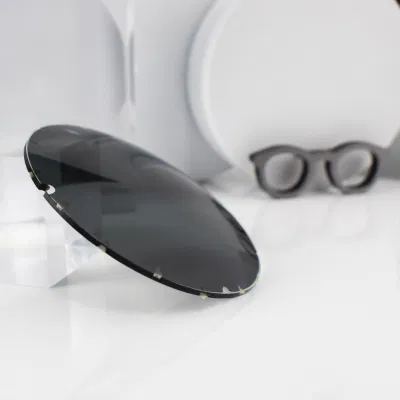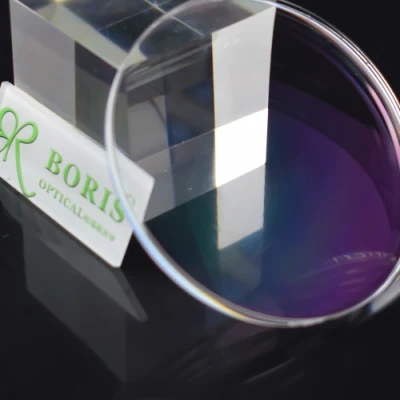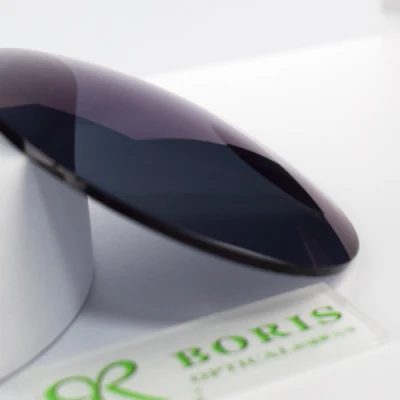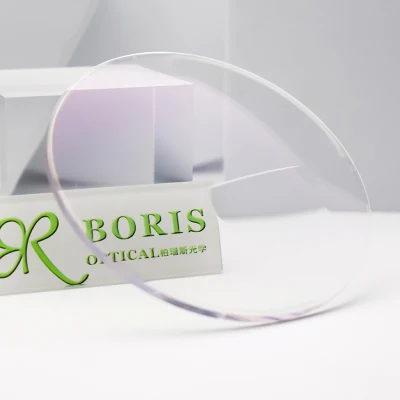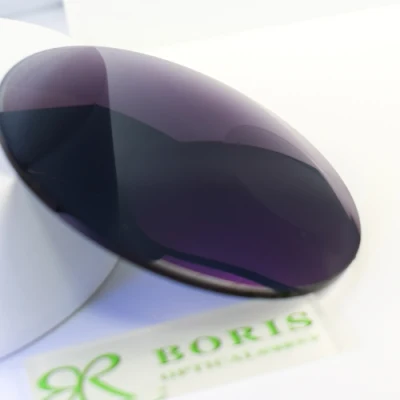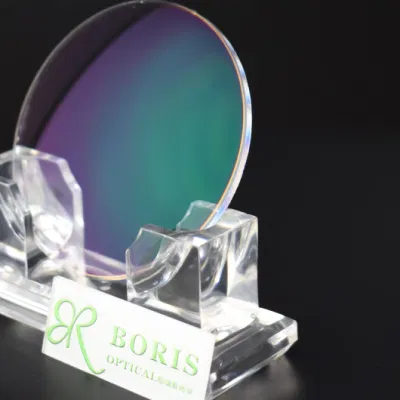Basic Info.
Product Description
Here provide all kinds of customized optical lens which according to your drawings, sample products or detailed requirements. Any inquiry please feel free to contact us, thanks!

Applications
Ball lenses are an important part of telecom and other fiber optic systems. Ball lenses can be used to couple fibers, allowing light to travel between fibers with minimal losses. Additionally, ball lenses can focus laser light into an optical fiber or collimate light as it exits a fiber. Ball lenses are used in barcode scanners, endoscopes, and optical sensors.
Working with Ball Lenses
Ball lenses are used in many of the same applications as gradient index (GRIN) lenses. There are often several advantages to using a ball lens rather than a GRIN lens: ball lenses are typically smaller and cheaper than GRIN lenses; the spherical symmetry of a ball lens is an advantage - this forgiving geometry makes it easier to mount and align, and the ball lens has a high coupling efficiency and is less sensitive to variations in temperature that can affect coupling.
| Material | BK7 ,Fused silica, sapphire |
| Coating | as required |
| Structure: | round |
| Surface Quality: | 40/20, 60/40 |
| Diameter | 0.5mm~20mm |
| Clear Aperture | Over 90% |
| Tolerance of FL | ±2% |
| Surface quality | N<3(0.5)@632.8nm |

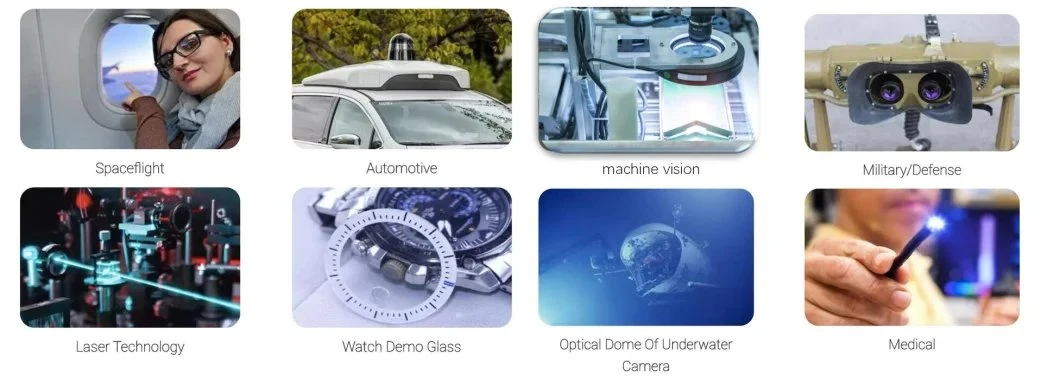
A dove prism is a kind of image rotator. The image is inverted 180° after the light passes through the prism. In addition, when the prism is rotated with its optical axis, the rotation angle of the image is twice that of the prism.
Generally speaking, dove prism realizes internal total reflection by using the principle of critical angle, so its field of view Angle is limited. At the same time, it is important to keep the reflector clean and use parallel light.
The dove prism is an ideal for image rotation. It create an image inversion in a beam input parallel to the base.
What Is Optical Prism?
Optical prism, a transparent object surrounded by two planes that intersect but are not parallel to each other, used to split or disperse light beams. Prisms are polyhedrons made of transparent materials (such as glass, crystal, etc.). It is widely used in optical instruments.

| Material Type | H-K9L/UV Fused Silica |
| Customized Support | OEM & ODM |
| Model Number | Dove Prism |
| Application | digital equipment, science and technology, medical instruments and other fields. |
| Scratch/Dig | 40/20 |
| Dimension Tolerance | +/-0.05 to 0.1mm |
| Angle Tolerance | ±1 |
| Flatness Tolerance | 1/4 lambda or as needed |
| Coating | AR,AF,AL,black print or as needed |
| Chamfer | optical level as needed |
| Transmission | >90% higher with AR coating |
Optical Prism Application?
In modern life, prisms are widely used in digital equipment, science and technology, medical instruments and other fields.
Optical Prism for Image: cameras, CCTVs, projectors, Optical Prism for Camera, digital camcorders, CCD lenses and various optical equipment;
Science and technology: telescopes, microscopes, levels, fingerprints, gun sights, solar energy converters and various measuring instruments;
Medical equipment: cystoscope, gastroscope and various laser treatment equipment.
Optical Prism Types
According to the shape can be divided into the following: Right Angle, Dove, Rhombic, Penta Prism and special shaped prisms. We can custom optical prism according to your needs.
There are mainly four types of prisms according to their functions, dispersive prisms, deflecting or reflecting prisms, rotating prisms, and offset prisms. Deflection, offset, and rotation prisms are commonly used in imaging applications; diffuser prisms are designed for use with dispersive light sources and are therefore unsuitable for any application requiring high-quality images.





Cylindrical lens is used to correct astigmatism in the optical system, and, in rangefinders, to produce astigmatism, stretching a point of light into a line. It is usually used in barcode scanners, objective systems and other optical systems.
Feature:

1 . Correcting Astigmatism
One of the main applications of cylindrical lenses is in ophthalmology, specifically, to correct astigmatic vision. When a person presents astigmatic vision, it is usually the result of a corneal deformation. An astigmatic cornea will have different focal points at different axes. It is then possible to use a cylindrical lens to change the focal point of one of the axes to overlap the second one.
2 . Laser Line Scanning
This is a technique that is used to capture the shape of a 3D object into a digital copy. It is particularly useful in manufacturing, prototyping, landscaping, and architecture. This scanning technique measures the deformation of a straight line created by a cylindrical lens when it is incident into a non-flat surface. By using cameras and triangulation, it is possible to measure the changes in the shape of our laser line and therefore estimate the shape of the object that we are measuring. If you would like to learn more about Laser Line Scanning please leave a comment.
3. Laser Scanning Microscopy
They are usually used in combination with acousto-optic deflectors, where the focal point of a variable lens (the acousto-optical elements) can change its position laterally without the use of movable parts. The cylindrical lens corrects the image and helps focus the light spot onto the correct plane for laser scanning microscopy.
Q1:Can you send me free samples or Can i have an sample order ?
A: Yes, We accept sample orders, and we're also willing to send you free sample to test and check its quality . if we don't have the item in stock , then you could place an sample order.
Q2: How many days can i get my package after placing order?
A: If the order needs customized also the quantity is big. it will take around 10-30 wroking days to produce then shipping.
Q3: OEM services available?
A: Sure, please send us your design paper on platform to confirm more details information.
Q4:We have a commercial project,Can you help me offer an optical design solution ?
A:Yes, we have professional experts who are engaged in optical design for more than 25 years , please send us more detail of your project,we will supply our most suitable solutions for you.
Q5: What shipping methods do you have?
A: For small quanities or sample could by express such as: Fedex, UPS, DHL, EMS, etc. Large scale quantity in your demands:by sea/train ,or by air.In your requests.









